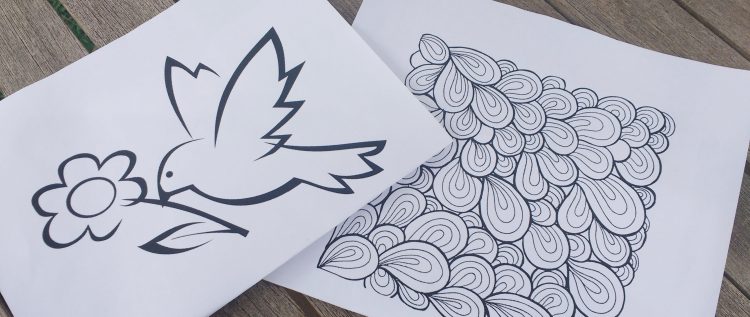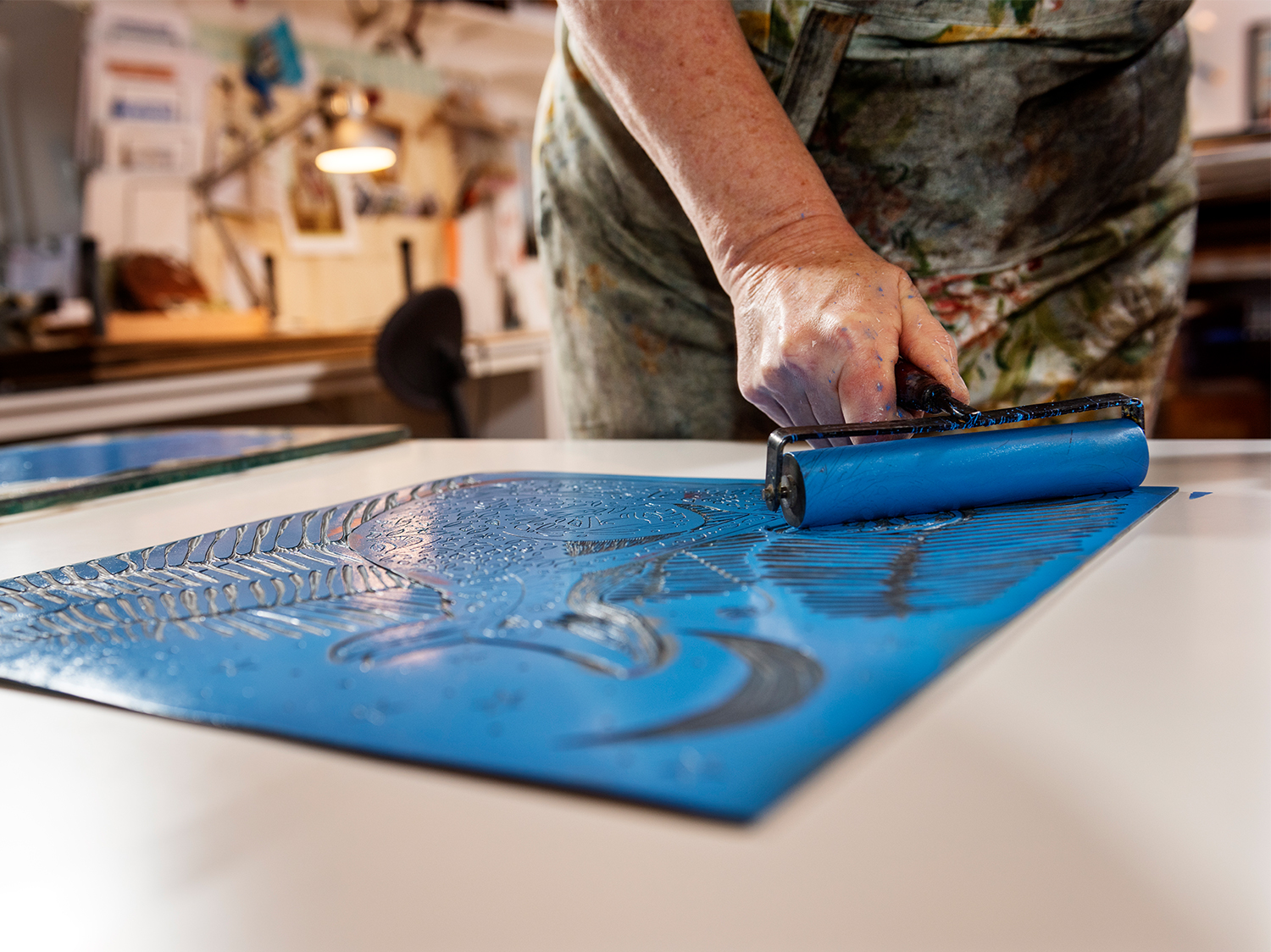
I recently attended a lino printing workshop, something that I’ve been keen to try out for a while. The printing process has always been a great interest of mine, seeing my work go from screen to print never fails to put a smile on my face. So, I was really excited to get messy for the day and try out a new technique.
So, what is lino printing?
Well, it turns out that as well as a practical floor covering, linoleum boards can also be used as a printing plate with great effect. Take a read of this step-by-step process detailing the stages needed to create your first lino print masterpiece.
Materials needed:
- Paper
- Polymer sheet
- Inking tray
- Rubber or sponge roller
- Ink (suitable for relief printing)
- Lino sheet
- Lino cutter
- Pen & pencil
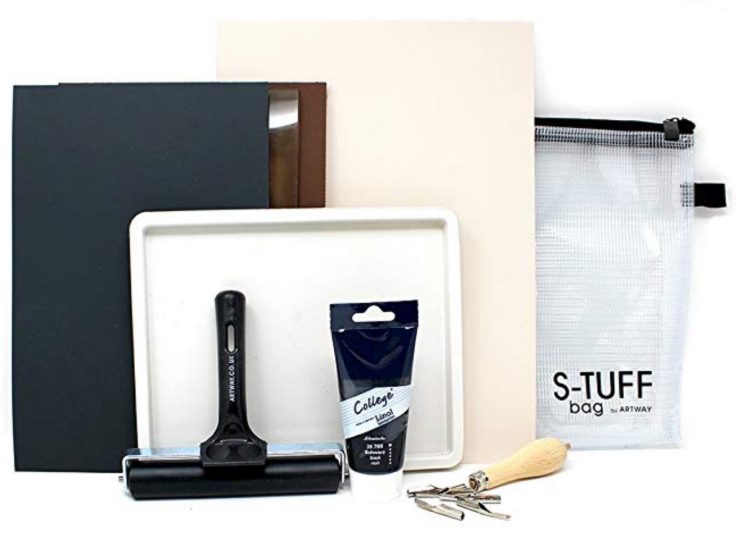
Image credit: Kit sold on Amazon.co.uk view here
Creating your design
Design inspiration is everywhere, so really, it’s up to you what you choose as the focus for your piece. I decided to use an image of a bird and a funky swirly background pattern. Find inspiration from images that you like, or draw something from scratch. Remember to size it up correctly with the dimensions of the lino you are using. If it’s too large, you will have to scale it down before moving onto the next stage.
Trace once, trace twice, trace thrice!
Once you have your design elements, you need to trace it onto some tracing paper. Use a sharp pencil to do this and ensure you press down firmly so that your marks can be seen. When finished, turn your tracing paper over and lay it face down onto your lino board. Now go over your tracing so that it marks the lino with your design. Then have a quick shake off of your hands (mine started to ache at this point) and use a pen to go over the pencil outline that has been transferred onto the board. This makes it much easier to see when cutting out which we’ll discuss next.
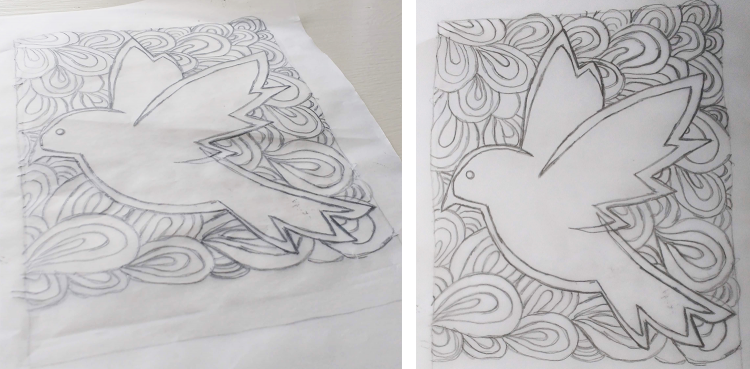
Cutting out
Use a lino cutter to cut out your design. I’d recommend having a few practises with the cutter and trying out different size nibs, before you do the real thing. It’s certainly something that I need to practise and involves a great level of skill. My tip would be to watch the angle you use the cutter at. Too steep and it tends to gouge out a mark too deeply, too shallow and you won’t cut enough away. Remember anything that is cut out will not have the ink applied.
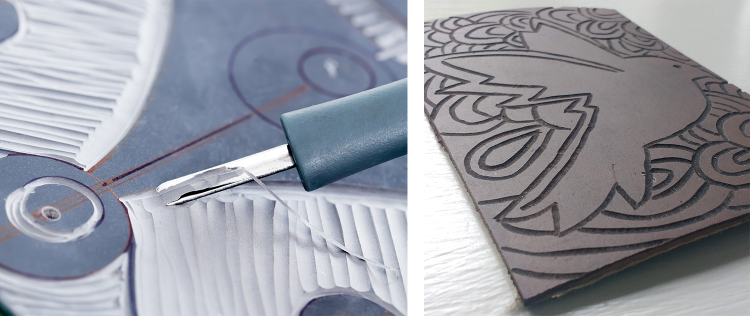
Inking up
You’re at the messy stage! So, if you’re like me you’ll need to wear some gloves and an apron to avoid getting covered. It’s important to make sure you buy inks suitable for relief printing. Squeeze a good amount of ink into your inking tray. Then get your roller and pick up the ink. I experimented with sponge and rubber rollers, and they result in different effects. Use a polymer sheet to roll the ink to cover the surface of the roller fully. Next roll the roller over your lino design. Do one continuous movement from top to bottom, then go back to your ink, and roll from top to bottom again. Continue this until the lino is covered.
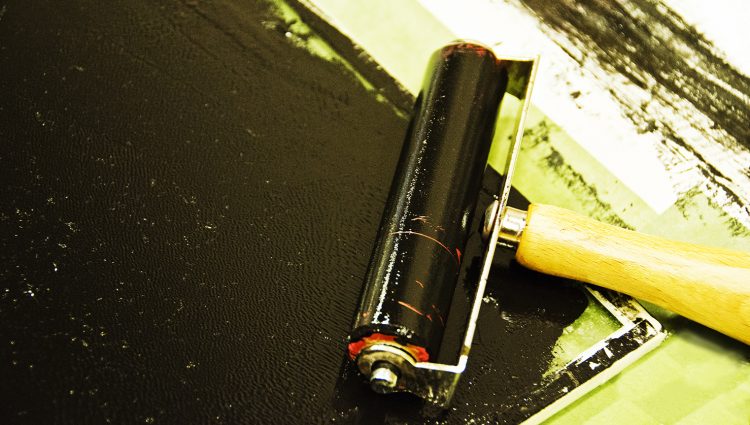
Get printing
Now for exciting bit! Get the paper or material for you printed design and place it over the lino. Press down and rub the entire surface of the lino with your fingers to ensure the ink transfers fully – be very careful not to move the paper in this stage. Lift off the paper and ‘voilà’ you have your finished print. The great thing is you can repeat this as many times as you’d like. Try using different colour inks, papers and materials to see what results you get.
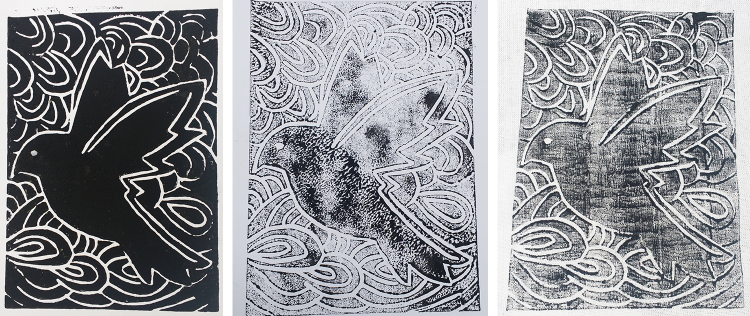
Image 1 – Rubber roller on paper, Image 2 – foam roller on paper, Image 3 – rubber roller on material
Summary
I thoroughly enjoyed getting hands on and exploring new mark-making techniques. I don’t think it’s quite ready to be framed, so I’ll go back to the drawing board (or should that be lino board) to have another go. Practise makes perfect as they say, but I’m quite pleased with my first attempt. I hope this blog may have inspired you to do the same and learn a new skill. I would love to see your projects, so get in touch to share them!
